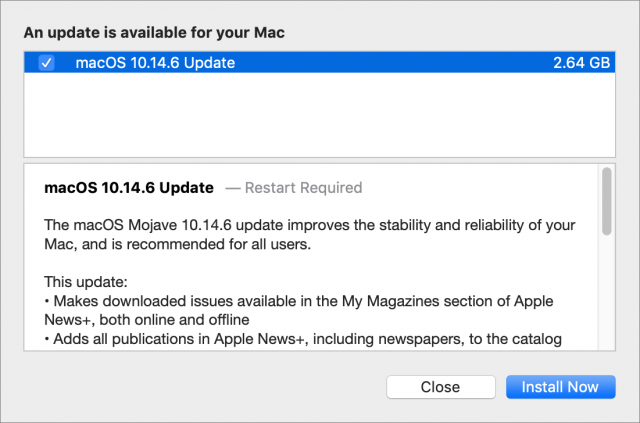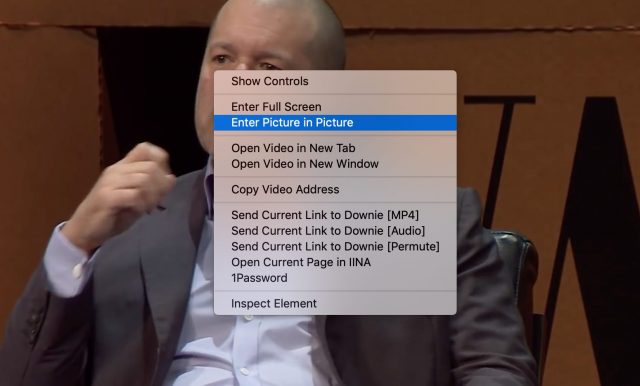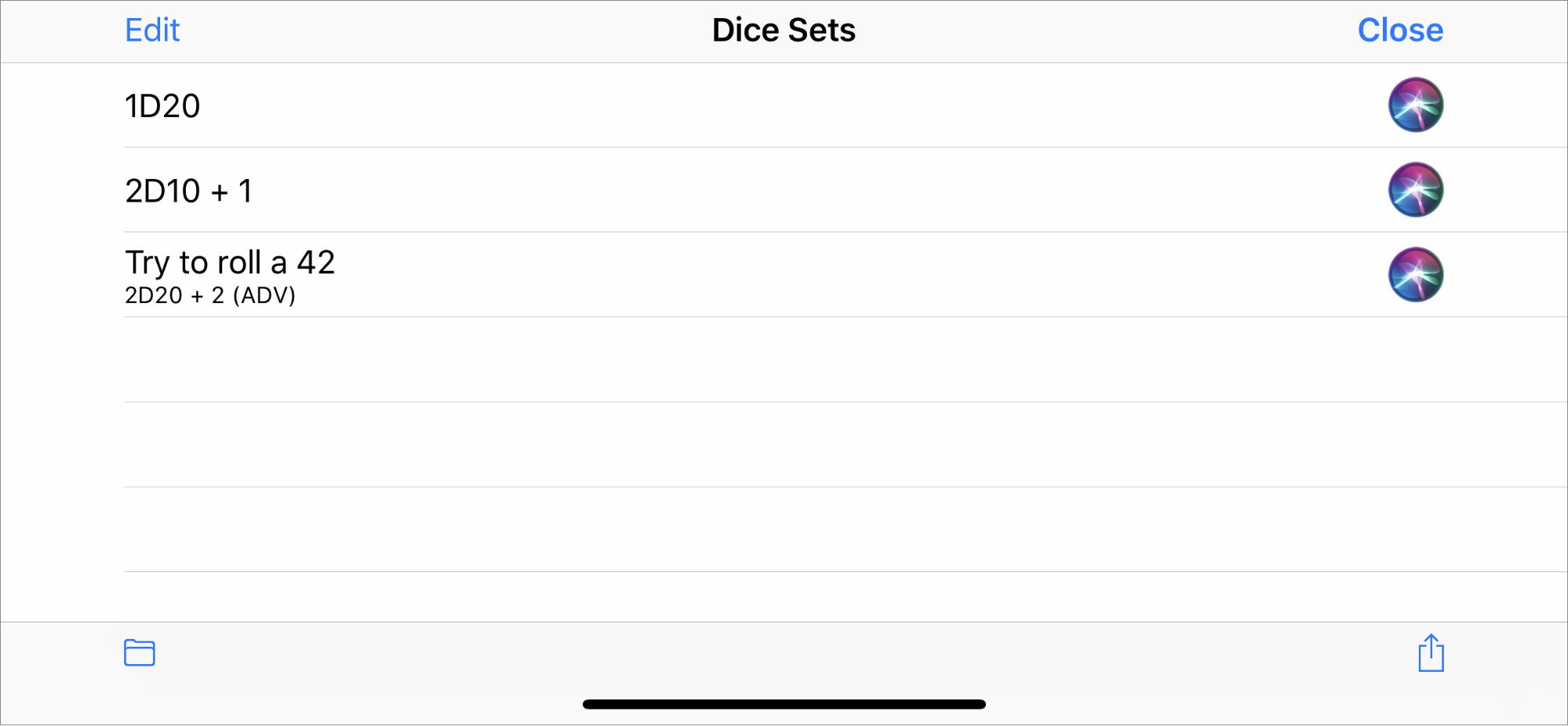#1474: Apple OS updates, YouTube Picture-in-Picture tip, Dice by PCalc review, Orange 4G SIM card for European vacations
It’s that time again—Apple has released macOS 10.14.6, iOS 12.4, watchOS 5.3, and tvOS 12.4, plus surprise updates to the obsolete iOS 10.3.4 and 9.3.6. Among other things, these updates provide enhancements to Apple News, fix the security vulnerability in the Apple Watch’s Walkie-Talkie app, and address other potentially serious security vulnerabilities. If you’ve been frustrated by not being able to use the Picture-in-Picture feature of macOS and iOS with YouTube videos, Josh Centers explains how to find the necessary controls. For those who play tabletop role-playing games that require a lot of dice rolling, Josh also reviews the new Dice by PCalc app, which provides a gorgeous skeuomorphic interface. Finally, if you’re planning a European vacation, Adam Engst is back from his with a recommendation for an inexpensive 4G SIM card that provides good coverage and plenty of data throughout Europe. Notable Mac app releases this week include DEVONthink 3.0 Public Beta 4, SoundSource 4.1.1, Quicken 2019 5.11.2, Bookends 13.2.5, and Slack for Mac 4.0.
Apple Releases macOS 10.14.6, iOS 12.4, watchOS 5.3, tvOS 12.4, and More
It’s time for another round of operating system updates, with Apple releasing macOS 10.14.6, iOS 12.4, watchOS 5.3, and tvOS 12.4. Surprisingly, the company also released updates to much older versions of iOS—versions 10.3.4 and 9.3.6—to fix a few problems that older iOS devices might encounter.
Normally, we recommend waiting a few days before installing minor updates, but Security Editor Rich Mogull recommends updating to macOS 10.14.6 and iOS 12.4 right away due to the severity of the remote execution vulnerabilities they address.
macOS 10.14.6
With macOS 10.14.6, Apple is focusing on adding features to Apple News and providing a few bug fixes. The Apple News improvements make downloaded magazine issues available in the My Magazines section even while the Mac has no Internet access, add all publications in Apple News+ to the catalog at the top of the News+ feed, and let you clear downloaded magazine issues in History > Clear > Clear All.
As far as bug fixes go, macOS 10.14.6:
- Addresses an issue which prevents the creation of a new Boot Camp partition on an iMac or Mac mini with a Fusion Drive
- Resolves a bug that may cause a hang during a restart
- Resolves a graphics issue that may occur when waking from sleep
- Fixes an issue that may cause full-screen video to appear black on the Mac mini
- Improves file-sharing reliability over SMB
- Addresses a bug that could cause file-sharing connections to drop
- Improves the compatibility of Xsan clients when accessing volumes that use 1K or larger LUN sector sizes
macOS 10.14.6 also includes 25 security fixes.
The update weighs in at 2.64 GB, and you can install it using the Software Update pane of System Preferences.
iOS 12.4
The iOS 12.4 update fixes the Walkie-Talkie vulnerability on the Apple Watch and reactivates that feature (see “Apple Disables the Apple Watch Walkie-Talkie App Due to Eavesdropping Vulnerability,” 11 July 2019).
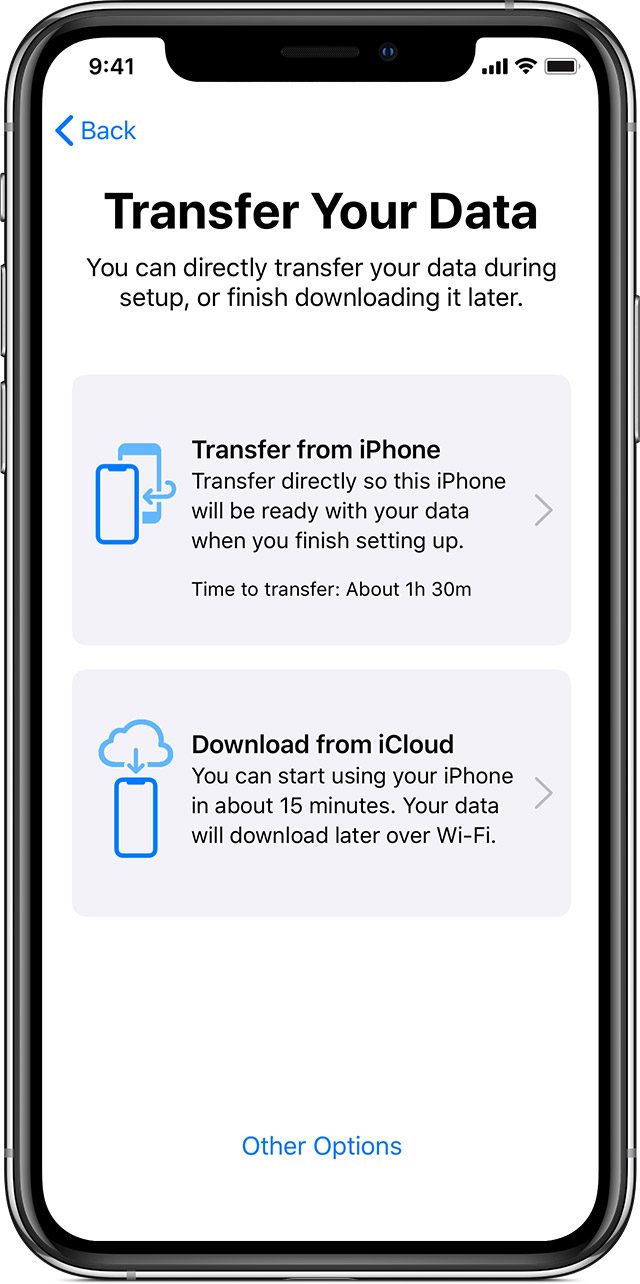 iOS 12.4 provides a new iPhone migration tool that “introduces the ability to wirelessly transfer data and migrate directly from an old iPhone to a new iPhone during setup.” It extends the existing Quick Start feature that helps you set up a new device using an existing one. Apple says you can also connect the devices using the Lightning to USB 3 Camera Adapter and a Lightning to USB Cable, but it’s not clear when that might be preferable.
iOS 12.4 provides a new iPhone migration tool that “introduces the ability to wirelessly transfer data and migrate directly from an old iPhone to a new iPhone during setup.” It extends the existing Quick Start feature that helps you set up a new device using an existing one. Apple says you can also connect the devices using the Lightning to USB 3 Camera Adapter and a Lightning to USB Cable, but it’s not clear when that might be preferable.
The iOS 12.4 update offers the same Apple News improvements as appear in macOS 10.14.6: making downloaded issues available in My Magazines even while offline, adding all publications in Apple News+ to the News+ catalog, and letting you clear downloaded magazine issues.
Many outlets are also reporting that iOS 12.4 adds support for the forthcoming Apple Card (see “Apple Card: More Than Just a Credit Card,” 28 March 2019), but Apple doesn’t mention that in the release notes.
iOS 12.4 includes 19 security fixes.
You can update to iOS 12.4 in Settings > General > Software Update or through iTunes. The update weighs in at 385.4 MB on the iPhone X and 319.8 MB on the 10.5-inch iPad Pro.
iOS 10.3.4 and 9.3.6
Although Apple very seldom updates obsolete versions of iOS, MacRumors is reporting that Apple has released iOS 10.3.4 and 9.3.6 to fix a problem that impacts GPS location performance and could lead to incorrect system dates and times. If you’re using a device that can’t upgrade beyond one of those versions, the update is likely worth installing after waiting a few days to make sure it doesn’t introduce new problems.
watchOS 5.3
As with previous watchOS updates, watchOS 5.3 enables the ECG app and irregular heart rhythm notifications in more countries, this time bringing Croatia, Czech Republic, Iceland, Poland, and Slovakia into the fold. It also disables accessories with insecure Bluetooth connections, fixes an issue where the numbers on the Explorer face wouldn’t appear for some users, and adds a new watch face.
watchOS 5.3 has 16 security fixes. Oddly, the Walkie-Talkie vulnerability discussed in the iOS 12.4 release notes doesn’t warrant a mention here.
You can install the 104 MB update using the iPhone’s Watch app—go to Watch > General > Software Update. Once you update to iOS 12.4, you may as well update to watchOS 5.3 too.
tvOS 12.4
Apple has released tvOS 12.4, saying nothing more about its changes other than the usual “general performance and stability improvements.” The company also issued Apple TV Software Update 7.3.1 for the third-generation Apple TVs with the same unhelpful description. It’s entirely possible that the entire point of tvOS 12.4 is to disseminate 14 security fixes.
If automatic updates aren’t on, you can update your Apple TV HD or Apple TV 4K by going to Settings > System > Software Updates. For a third-generation Apple TV, go to Settings > General > Software Updates.
TipBITS: Watch YouTube Videos in Picture in Picture
The Picture in Picture (PiP) feature on the Mac and iPad is a handy way to watch videos, letting you pin a video in the corner of your screen where other windows can’t obscure it. But by default, Picture in Picture doesn’t appear to be available for videos from YouTube, which hides the PiP feature in macOS and avoids enabling it in the iOS YouTube app. Presumably, YouTube doesn’t want you shrinking its window to reduce your exposure to its ads.
Luckily, PiP is available for YouTube videos on both the Mac and the iPad, if you know where to look.
YouTube Picture in Picture on the Mac
In macOS, you ordinarily see an Enter Picture in Picture option when you Control-click a video in Safari. However, when you Control-click a YouTube video, you see YouTube’s custom contextual menu instead.
Luckily, you can easily work around this limitation with a simple trick: Control-click the video a second time to reveal Safari’s native contextual menu. Choose Enter Picture in Picture and Safari displays the video in a window pinned to the corner of your screen. (Note that Picture in Picture is available only in Safari, not in other Web browsers.)
YouTube Picture in Picture on the iPad
There are some paid utilities for iOS that put YouTube videos in Picture-in-Picture, but you should save your money. All you need to know is that YouTube in Safari doesn’t display the PiP button by default. To reveal it:
- Tap the full-screen button in the lower-right corner. Once the video has taken over the screen, the PiP button appears in the upper-left corner. (Reader Robert Morrison notes that you can also pinch out with two fingers on the video to make it full screen.)
- Tap the PiP button to shrink the video down to a thumbnail.

Note that this trick doesn’t work in the YouTube app.
Now you can enjoy YouTube videos in Picture on Picture on your Mac and iPad!
Take a Chance with Dice by PCalc
James Thomson, the developer of PCalc, is famous for over-engineering his popular and long-standing calculator app. Whenever Apple announces a new technology, whether it’s watchOS, tvOS, 3D Touch, Siri Shortcuts, or even ARKit, you can be sure that PCalc will be among the first apps to adopt it.
Now Thomson has brought that same level of tech enthusiasm to random number generators with Dice by PCalc for the iPhone and iPad ($1.99). Dice apps are nothing new—the App Store is littered with them—but you won’t find another one with nearly the same level of detail.
Dice is as skeuomorphic as an app can be. It displays a wooden box, into which you can drop any combination of multi-sided dice. Anyone familiar with tabletop role-playing games (RPGs) like Dungeons & Dragons will instantly recognize the designations—D4 for a four-sided die, D6 for the traditional six-sided die, and so on, all the way up to D100, which is useful for generating percentages.
Tap a button to drop a die on screen and watch it roll and bounce with realistic physics until it settles. You can flick a die with your finger to reroll it or shake your device to reroll all the dice on the screen. Of course, you could tap the reroll button, but that’s not as much fun.
I’m impressed by the stability and performance of Dice. I’ve dropped dozens of dice at once—so many that they start stacking on top of each other—to see if I could crash the app, and I haven’t succeeded yet.
Thankfully, you don’t have to add up dice results as you do in the real world. Dice does it for you, along with listing how many and what kind of dice you rolled. You can also add modifiers to your dice rolls, like +1 or -1, which is handy for RPGs that require modifiers. You can also perform “advantage” (ADV) and “disadvantage” (DIS) rolls. These are types of rolls used in later editions of Dungeons & Dragons in which you roll two dice instead of one and take the higher or lower result. You can even set it so that the extra ADV/DIS die has a different look than the primary die.
I do wish Dice would add up the dice results by dice type, and James Thomson told me that he has slated this feature for a future release. Such a feature could be useful if, for instance, you’re playing a game where you have to roll a D20 to determine whether you hit an enemy and then two D10s to figure how much damage was done. It also would be nice if you could roll all of those dice at once to save time. The best way I’ve found to do that is to tap the buttons to drop the individual dice on screen—Dice will tally multiple dice of the same kind dropped in succession—and then tap Clear to clear off the board.
You can also save multiple sets of dice and roll them all with a single tap, but it takes a couple of taps to access the sets. I would like to see a way to pin saved dice sets to the main screen—again, Thomson told me this is in the works. The latest version of Dice works with Siri Shortcuts, so you can create a shortcut for a dice set and then activate it by saying something like “Hey Siri, roll a D20.”
You can choose from a variety of different dice styles, all of which look great. The default style is steel, but you can switch between topaz, ruby, plastic, and even a lava style. Dice also offers a dark mode that swaps out the wooden background for pure black.
This video shows off what Dice can do.
I was a little surprised that Dice doesn’t include an augmented reality feature, given all the AR-related bells and whistles in PCalc. It would be cool to be able to roll virtual dice on a real table. James Thomson said that would be hard to pull off since the dice models are huge, so you might have to settle for rolling the dice in your yard instead of on a table.
If you play dice-intensive games or have any other reason to roll dice regularly, Dice by PCalc is well worth a couple of bucks.
Orange Holiday Europe: A Cheap 4G SIM for Your European Vacation
Tonya and I just got back from a 2-week vacation in Switzerland, our first significant trip together in 20 years that didn’t involve family or business, although we did have the pleasure of staying with one of our TidBITS Angel supporters for a few nights. The trip was huge fun, complete with a Diamond League track meet in Lausanne, oodles of Picassos in Lucerne, hiking the Eiger Trail, via ferrata (also known as Klettersteig in German-speaking countries) at Mürren and Molésan and paragliding for me, and lots of cheese and chocolate.
Apart from using this article as an excuse to share a few vacation photos, I’m writing to tell you about a useful and economical way I found to get cellular data while traveling in Europe this summer: the Orange Holiday Europe SIM.
Last year, when we went to London with Tristan for a friend’s wedding, Giffgaff worked well (see “UK Travel Tips: Giffgaff for Cellular and Apple Pay for Transit,” 15 June 2018). But Giffgaff is designed for the UK and had deleted our accounts for inactivity anyway, so before this trip, I looked for alternatives that would work in Switzerland. One site recommended SimCorner’s Europe & UK SIM Card, which cost €25 for 12 GB of 4G data and allowed tethering. Unfortunately, it required up to 12 business days to ship from Australia. It might have arrived in time, but I didn’t want to risk it.
The prepaid options from Swiss providers Salt and Swisscom were too difficult to figure out from abroad, and I prefer to know that I’ll have connectivity as soon as I land, without having to find a store in the airport. A few searches later, I stumbled on a pair of options available through Amazon: the Orange Holiday Europe SIM from the French cell company Orange and the PrePaid Europe SIM from UK cellular provider Three, both about $22.
Although the Three SIM provided 12 GB of data and many more phone minutes and SMS texts, I opted for the Orange SIM, since it used 4G networks instead of 3G and allowed tethering so we’d be able to use iOS’s Personal Hotspot feature with our iPads. By default, the Orange SIM comes with 3 GB of data, but if you activate it before 22 August 2019, that jumps to 8 GB. 4G was available in many spots in Switzerland, but we also saw plenty of 3G and even Edge, along with a few spots of No Service.
The extra 5 GB of data turned out to be unnecessary since I consumed only 2.12 GB, even with constant mapping with Google Maps and Apple’s Maps, along with everything else I wanted to do. The only limitation I imposed on my usage was entering Low Power Mode at the start of every day to conserve power, which also reduces background network traffic like iCloud Photos syncing.
Tonya went through just 0.75 GB of data, largely because the battery life on her iPhone 6s was terrible despite having had its battery replaced last year and having a Battery Health Maximum Capacity Rating of 88%. Battery life is seldom a problem for her at home, but perhaps the need to hunt for cell signal caused her iPhone to drain more quickly while we were in Switzerland. We brought an external TYLT battery (older than what the company sells now), but she was still leery of running out of power when the iPhones were so essential for navigating the Swiss public transit system and getting walking directions.
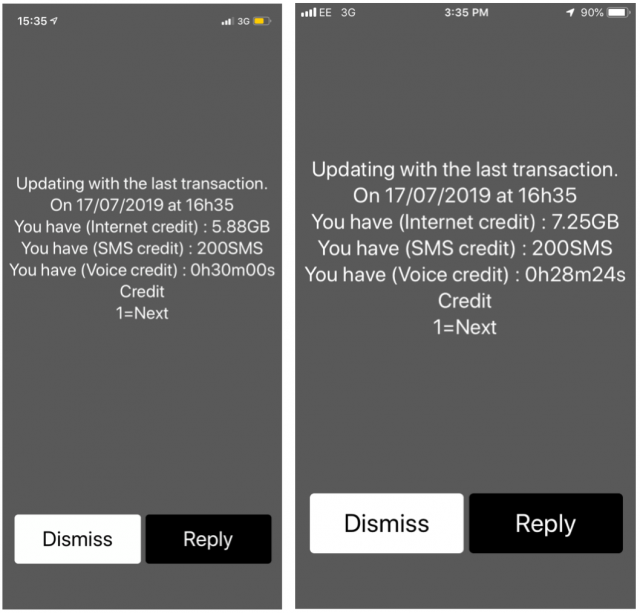
Overall, the Orange SIMs just worked, and for only $44 for the two of us, they were a steal compared to AT&T’s international plans. The AT&T International Day Pass plan charges $10 per phone per day, so it would have cost us $280 for the 14-day trip. The AT&T Passport plan is cheaper at $60 for 1 GB or $120 for 3 GB (for a month), but it still would have totaled $180 combined.
So if you’re planning to travel to Europe this summer and are looking for connectivity (which I consider absolutely essential in today’s world—the trip would have been vastly more stressful without mapping apps), consider the Orange Holiday Europe SIM.
I do have a few notes and recommendations:
- Orange packages the SIM and its accompanying documentation in a tough blister pack. Make sure to open it with scissors or a sharp knife before you leave because there’s no way you’ll be able to open it with what airlines allow you to put in a carry-on.
- The Orange SIM works only in Europe, so you can’t test it before leaving.
- You can’t find out your French phone number until you insert the SIM upon arriving in Europe, which may make it harder to convey to those who might need to contact you.
- Remember to pack a SIM extraction tool or paperclip so you can swap the Orange SIM for your regular one when you arrive. Also, be sure to bring something in which to store your regular SIM, since it would be all too easy to lose.
- Orange wants you to register the SIM and provides a paper form (in French) with a pre-addressed envelope (if you’re up for sending international mail). The package suggests an online option too, but that page assumes you have a French passport. Happily, the Orange Holiday SIM Card FAQ gives another link that allows any nationality of passport.
- Note that your phone number, being French, actually begins with a 0, although Orange gives it to you with the country code instead. Presumably, people in France will know that and everyone else will use the +33 country code.
- I mentioned this last year (and am reusing the screenshot), but it’s worth noting again. When you switch SIMs, your iPhone will get snippy about updating your “trusted number,” which is helpful if you need to sign in from a new device. It’s best to update to the new number but, when prompted, tap Use Both Numbers.
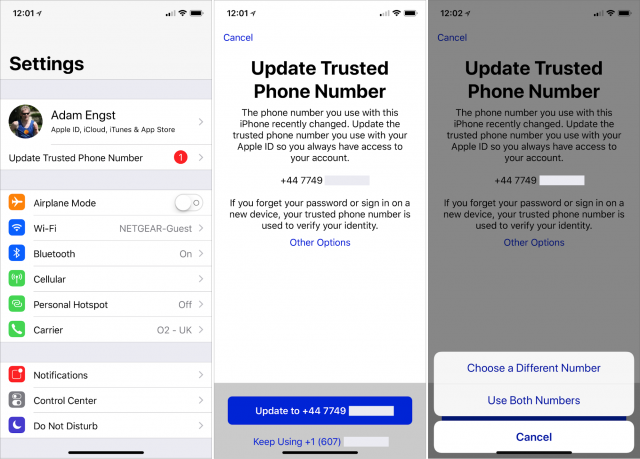
I hope the Orange Holiday Europe SIM works out for you, and that you have as enjoyable a vacation as we did! And if you come up with another solution to the international connectivity conundrum, please share it in the comments.
